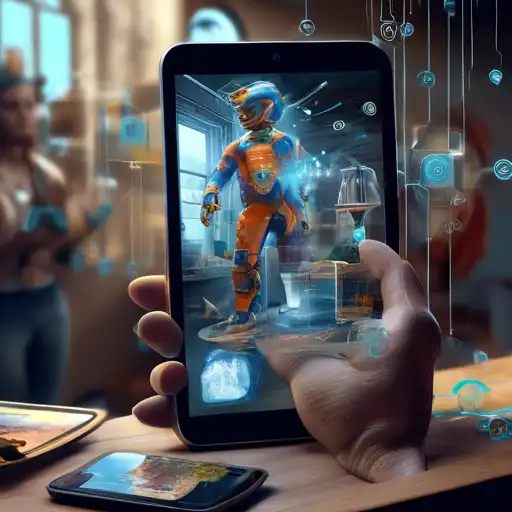Introduction to Augmented Reality
Augmented Reality (AR) is transforming the way we interact with the world around us. By overlaying digital information onto the physical environment, AR creates a blended experience that enhances both the virtual and real worlds. This technology is not just a futuristic concept but a present-day reality that's being integrated into various sectors including education, healthcare, retail, and entertainment.
How Augmented Reality Works
At its core, AR technology uses sensors and algorithms to detect the physical environment and then superimposes digital content in real-time. This can be achieved through smartphones, tablets, AR glasses, and other wearable devices. The seamless integration of digital and physical worlds offers endless possibilities for interactive experiences.
Applications of Augmented Reality
AR is revolutionizing industries by providing innovative solutions to traditional problems. In retail, for example, AR allows customers to visualize products in their own space before making a purchase. In education, it brings learning to life by making abstract concepts tangible. Healthcare professionals use AR for complex surgeries, providing them with real-time, 3D visualizations of the patient's anatomy.
Retail and E-commerce
One of the most visible applications of AR is in the retail sector. Brands are leveraging AR to offer virtual try-ons, enabling customers to see how clothes, glasses, or makeup look on them without physically trying them on. This not only enhances the shopping experience but also reduces return rates.
Education and Training
AR is making education more interactive and engaging. From anatomy lessons where students can explore 3D models of the human body to history classes where historical events are recreated in the classroom, AR is transforming traditional learning methods.
The Future of Augmented Reality
The potential of AR is limitless. With advancements in technology, we can expect more immersive and interactive AR experiences. The integration of AR with other technologies like AI and IoT will further enhance its applications, making it an integral part of our daily lives.
Challenges and Considerations
Despite its potential, AR faces challenges such as privacy concerns, technological limitations, and the need for widespread adoption. Addressing these challenges is crucial for the future growth of AR technology.
Augmented Reality is not just a technological innovation; it's a new way of experiencing the world. As we continue to explore its possibilities, AR will undoubtedly play a pivotal role in shaping the future of digital and physical world integration.
For more insights into how technology is changing our world, check out our articles on Digital Innovation and Tech Trends.
